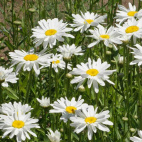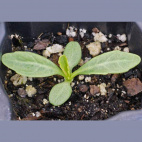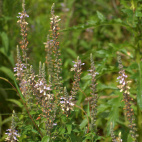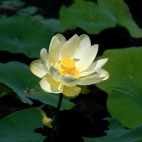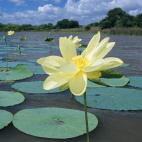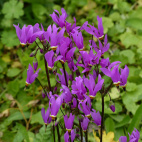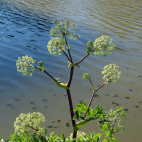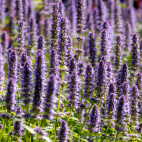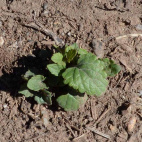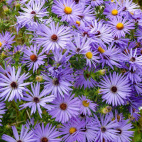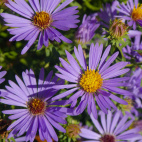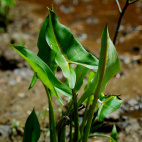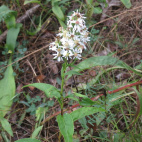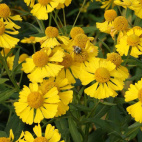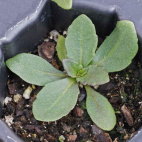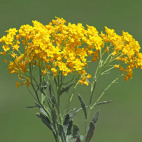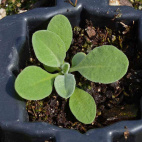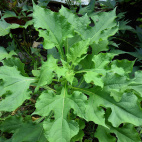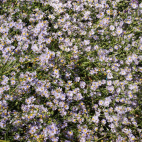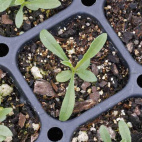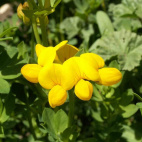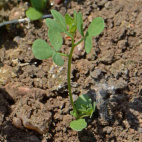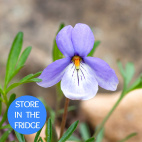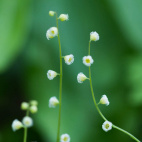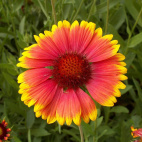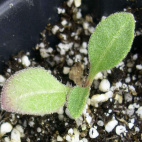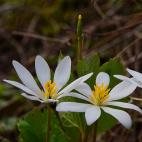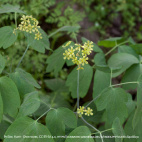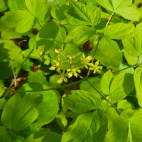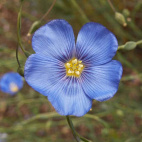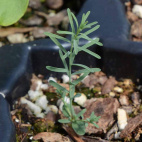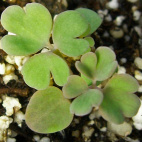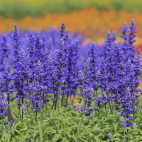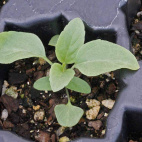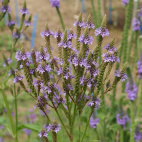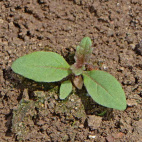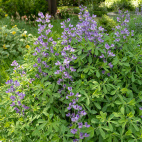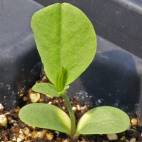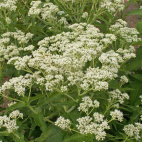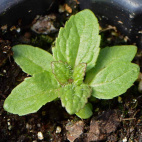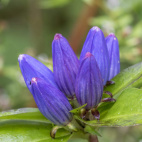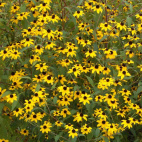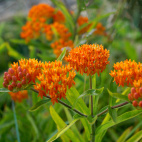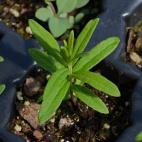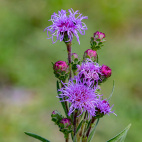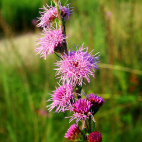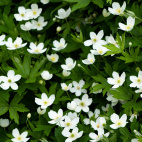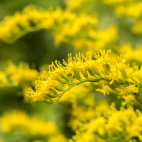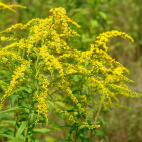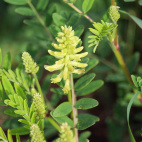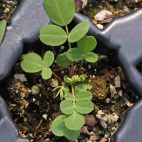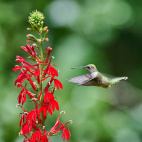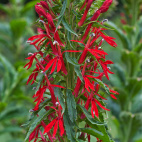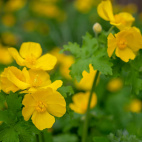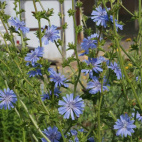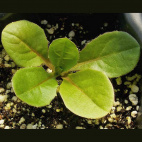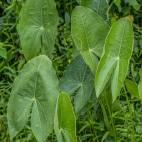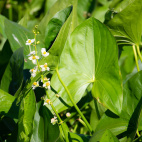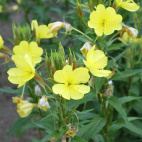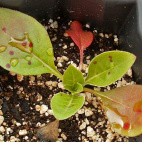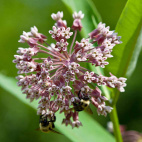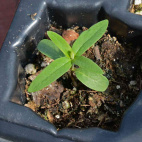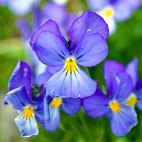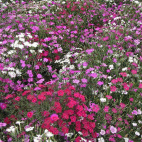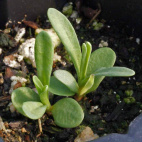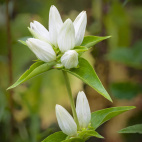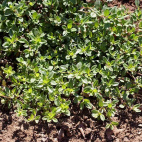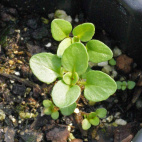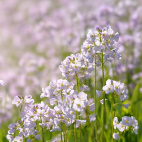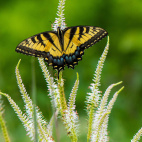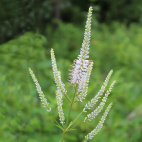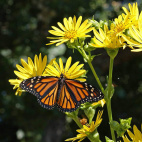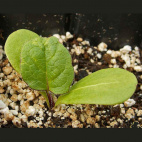Color
Availability
USDA Zone
Region
Type
Duration
Season
Germination
Soil
Sunlight
Height
Use
Narrow Your Search
Color
Availability
USDA Zone
Region
Type
Duration
Season
Germination
Soil
Sunlight
Height
Use
Wildflower Seeds - Northeast Region
-
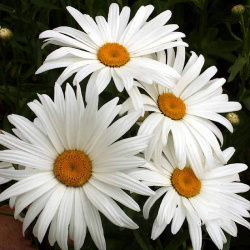 On Sale!
Alaska Shasta Daisy Seeds
Chrysanthemum maximum
Once established, this hardy perennial forms dense colonies of beautiful, white-petaled blooms. This easy-to-grow daisy looks a lot like the Ox Eye Daisy, but it is not as invasive.Quick View$2.98 Pkt - $7.92 / Oz
On Sale!
Alaska Shasta Daisy Seeds
Chrysanthemum maximum
Once established, this hardy perennial forms dense colonies of beautiful, white-petaled blooms. This easy-to-grow daisy looks a lot like the Ox Eye Daisy, but it is not as invasive.Quick View$2.98 Pkt - $7.92 / Oz -
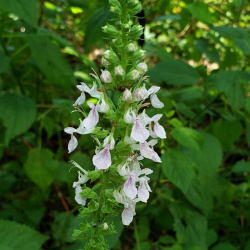 American Germander Seeds
Teucrium canadense
Clustered on velvety spikes, these pink to lavender flowers attract butterflies and hummingbirds. This native perennial is also known as Wild Basil, but we don't recommend consuming it.Quick View$3.48 Pkt - $30.00 / Oz
American Germander Seeds
Teucrium canadense
Clustered on velvety spikes, these pink to lavender flowers attract butterflies and hummingbirds. This native perennial is also known as Wild Basil, but we don't recommend consuming it.Quick View$3.48 Pkt - $30.00 / Oz -
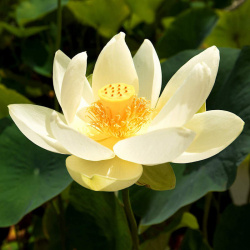 American Lotus Seeds
Nelumbo lutea
Add a bit of exotic flair to the garden pond with these aquatic perennial lotus flower seeds. The large yellowish blooms and round leaves float on the surface of the water. It looks like a flower from the tropics, but it is hardy and native to states as far north as Wisconsin!Quick Viewx
American Lotus Seeds
Nelumbo lutea
Add a bit of exotic flair to the garden pond with these aquatic perennial lotus flower seeds. The large yellowish blooms and round leaves float on the surface of the water. It looks like a flower from the tropics, but it is hardy and native to states as far north as Wisconsin!Quick ViewxAmerican Lotus Seeds
Nelumbo lutea
Add a bit of exotic flair to the garden pond with these aquatic perennial lotus flower seeds. The large yellowish blooms and round leaves float on the surface of the water. It looks like a flower from the tropics, but it is hardy and native to states as far north as Wisconsin!
$3.48 Pkt - $14.07 / Oz -
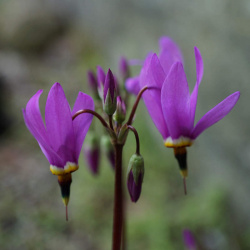 Out Of Stock
Amethyst Shooting Star Seeds
Dodecatheon amethystinum
Rivaling the amethyst in hue, these vivid purple blooms deserve a second look. The inside-out blossoms are sort of like miniature cyclamens but have a fragrance like perfume. This rare native is a petite gem but takes some patience because it takes several years to reach blooming size.Quick Viewx
Out Of Stock
Amethyst Shooting Star Seeds
Dodecatheon amethystinum
Rivaling the amethyst in hue, these vivid purple blooms deserve a second look. The inside-out blossoms are sort of like miniature cyclamens but have a fragrance like perfume. This rare native is a petite gem but takes some patience because it takes several years to reach blooming size.Quick ViewxAmethyst Shooting Star Seeds
Dodecatheon amethystinum
Rivaling the amethyst in hue, these vivid purple blooms deserve a second look. The inside-out blossoms are sort of like miniature cyclamens but have a fragrance like perfume. This rare native is a petite gem but takes some patience because it takes several years to reach blooming size.
$3.96 Pkt - $320.00 / Oz -
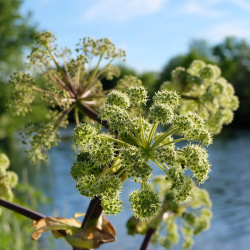 Angelica Seeds
Angelica atropurpurea
These showy, long-lasting blooms are taller than most other species in a wetland planting. Typically, it towers over the surrounding vegetation and produces the signature globe-like flowers that are hard to miss. The plant also grows in moist woodland areas.Quick View$3.48 Pkt - $12.65 / Oz
Angelica Seeds
Angelica atropurpurea
These showy, long-lasting blooms are taller than most other species in a wetland planting. Typically, it towers over the surrounding vegetation and produces the signature globe-like flowers that are hard to miss. The plant also grows in moist woodland areas.Quick View$3.48 Pkt - $12.65 / Oz -
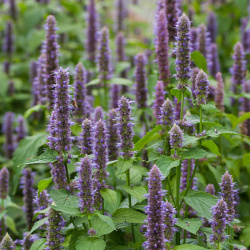 Anise Hyssop Seeds
Agastache foeniculum
A member of the mint family, this wildflower brings a delightfully rich scent to any herb garden. The tall, lavender flower spikes attract multitudes of hummingbirds, bees, and butterflies. It is a favorite with beekeepers, and we have found that the anise honey from this plant is excellent!Quick Viewx
Anise Hyssop Seeds
Agastache foeniculum
A member of the mint family, this wildflower brings a delightfully rich scent to any herb garden. The tall, lavender flower spikes attract multitudes of hummingbirds, bees, and butterflies. It is a favorite with beekeepers, and we have found that the anise honey from this plant is excellent!Quick ViewxAnise Hyssop Seeds
Agastache foeniculum
A member of the mint family, this wildflower brings a delightfully rich scent to any herb garden. The tall, lavender flower spikes attract multitudes of hummingbirds, bees, and butterflies. It is a favorite with beekeepers, and we have found that the anise honey from this plant is excellent!
$3.48 Pkt - $16.57 / Oz -
 On Sale!
Aromatic Aster Seeds
Aster oblongifolius
Distinguished by its attractive balsam-scented foliage, this large Aster blooms very late in the fall. Though rather uncommon in the wild, this lavender variety usually grows in rough, dry ground or prairie soil.Quick View$3.75 Pkt - $48.00 / Oz
On Sale!
Aromatic Aster Seeds
Aster oblongifolius
Distinguished by its attractive balsam-scented foliage, this large Aster blooms very late in the fall. Though rather uncommon in the wild, this lavender variety usually grows in rough, dry ground or prairie soil.Quick View$3.75 Pkt - $48.00 / Oz -
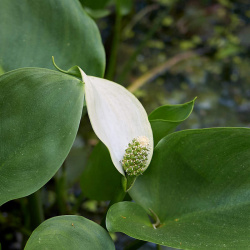 Store in the FridgeOn Sale!
Arrow Arum Seeds
Peltandra virginica
Named for its distinctive arrow-shaped leaves, this native plant grows in marshes, bogs, and on riverbanks. The greenish-white flowers develop sizeable green seed pods, which are best planted when still wet. Therefore, this arrow arum seed is stored wet and cold until we ship it to you.Quick Viewx
Store in the FridgeOn Sale!
Arrow Arum Seeds
Peltandra virginica
Named for its distinctive arrow-shaped leaves, this native plant grows in marshes, bogs, and on riverbanks. The greenish-white flowers develop sizeable green seed pods, which are best planted when still wet. Therefore, this arrow arum seed is stored wet and cold until we ship it to you.Quick ViewxArrow Arum Seeds
Peltandra virginica
Named for its distinctive arrow-shaped leaves, this native plant grows in marshes, bogs, and on riverbanks. The greenish-white flowers develop sizeable green seed pods, which are best planted when still wet. Therefore, this arrow arum seed is stored wet and cold until we ship it to you.
$3.48 Pkt - $7.92 / Oz -
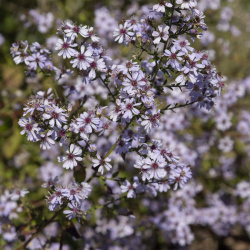 Arrow Leaved Aster Seeds
Aster sagittifolius
Delightful clusters of pale blue and lavender flowers add beauty to any planting in the fall season. Though no longer common in the wild, this Aster occasionally grows in open woodland areas or prairies.Quick View$3.75 Pkt - $54.00 / Oz
Arrow Leaved Aster Seeds
Aster sagittifolius
Delightful clusters of pale blue and lavender flowers add beauty to any planting in the fall season. Though no longer common in the wild, this Aster occasionally grows in open woodland areas or prairies.Quick View$3.75 Pkt - $54.00 / Oz -
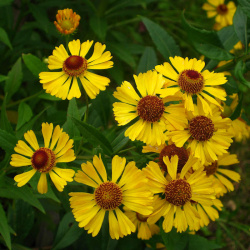 Autumn Sneezeweed Seeds
Helenium autumnale
If you tend to have heavy or wet soil in your garden spot, then these may be just the wildflower that you need! The daisy-like perennial can also be grown in a medium soil but needs to be well-watered, as they do not tolerate drought.Quick View$2.98 Pkt - $10.57 / Oz
Autumn Sneezeweed Seeds
Helenium autumnale
If you tend to have heavy or wet soil in your garden spot, then these may be just the wildflower that you need! The daisy-like perennial can also be grown in a medium soil but needs to be well-watered, as they do not tolerate drought.Quick View$2.98 Pkt - $10.57 / Oz -
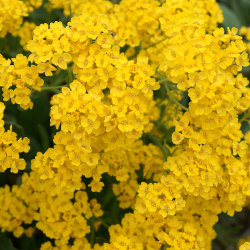 On Sale!
Basket of Gold Seeds
Alyssum saxatile
These sunny flowers will brighten any corner. Low, cascading growth and preference for dry, rocky ground makes Basket of Gold a popular choice for rock gardens.Quick View$3.48 Pkt - $15.95 / Oz
On Sale!
Basket of Gold Seeds
Alyssum saxatile
These sunny flowers will brighten any corner. Low, cascading growth and preference for dry, rocky ground makes Basket of Gold a popular choice for rock gardens.Quick View$3.48 Pkt - $15.95 / Oz -
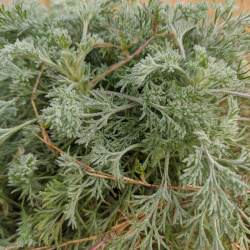 Beach Wormwood Seeds
Artemisia caudata
Beach Wormwood belongs to the sage family and thrives in sand dunes, beaches, and dry prairie soil. The hardy, sun-loving plant also attracts butterflies when it is in bloom.Quick View$3.48 Pkt - $22.17 / Oz
Beach Wormwood Seeds
Artemisia caudata
Beach Wormwood belongs to the sage family and thrives in sand dunes, beaches, and dry prairie soil. The hardy, sun-loving plant also attracts butterflies when it is in bloom.Quick View$3.48 Pkt - $22.17 / Oz -
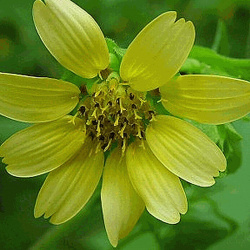 Bear's Foot Seeds
Polymnia uvedalia
Resembling a bear's footprint, this tall large-leaved plant also forms bright, yellow flowers. This native perennial likes to have plenty of space and spreads easily over time.Quick View$3.48 Pkt - $20.59 / Oz
Bear's Foot Seeds
Polymnia uvedalia
Resembling a bear's footprint, this tall large-leaved plant also forms bright, yellow flowers. This native perennial likes to have plenty of space and spreads easily over time.Quick View$3.48 Pkt - $20.59 / Oz -
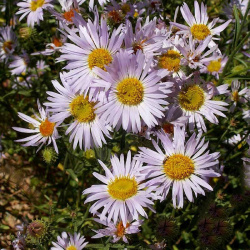 Bigelow's Aster Seeds
Machaeranthera biglovii
Native to the Southwestern United States, this bushy biennial is relatively resistant to heat and drought, making it a candidate for xeriscaping. The plant attracts butterflies and provides erosion control, making it an ideal pick for a wildflower planting.Quick Viewx
Bigelow's Aster Seeds
Machaeranthera biglovii
Native to the Southwestern United States, this bushy biennial is relatively resistant to heat and drought, making it a candidate for xeriscaping. The plant attracts butterflies and provides erosion control, making it an ideal pick for a wildflower planting.Quick ViewxBigelow's Aster Seeds
Machaeranthera biglovii
Native to the Southwestern United States, this bushy biennial is relatively resistant to heat and drought, making it a candidate for xeriscaping. The plant attracts butterflies and provides erosion control, making it an ideal pick for a wildflower planting.
$3.48 Pkt - $32.00 / Oz -
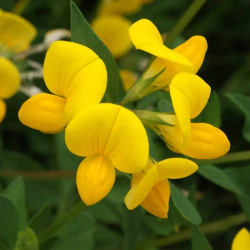 On Sale!
Bird's Foot Trefoil Seeds
Lotus corniculatus
This nitrogen-fixing legume is best known for its incredible adaptability to almost any soil type, which explains why it has naturalized across much of the US. This cheery yellow flower makes excellent forage for livestock and can be grown and harvested for hay. Care should be taken in where it is planted as it can become aggressive in ideal conditions.Quick Viewx
On Sale!
Bird's Foot Trefoil Seeds
Lotus corniculatus
This nitrogen-fixing legume is best known for its incredible adaptability to almost any soil type, which explains why it has naturalized across much of the US. This cheery yellow flower makes excellent forage for livestock and can be grown and harvested for hay. Care should be taken in where it is planted as it can become aggressive in ideal conditions.Quick ViewxBird's Foot Trefoil Seeds
Lotus corniculatus
This nitrogen-fixing legume is best known for its incredible adaptability to almost any soil type, which explains why it has naturalized across much of the US. This cheery yellow flower makes excellent forage for livestock and can be grown and harvested for hay. Care should be taken in where it is planted as it can become aggressive in ideal conditions.
$3.75 Pkt - $7.01 / Oz -
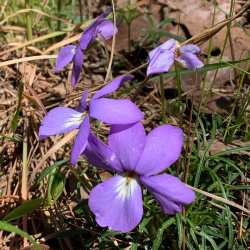 Store in the FridgeOut Of Stock
Bird's Foot Violet Seeds
Viola pedata
A stunning spring wildflower, this wildflower has been called the queen of violets. The petite plant grows just 4" tall but has rather large blooms.Quick Viewx
Store in the FridgeOut Of Stock
Bird's Foot Violet Seeds
Viola pedata
A stunning spring wildflower, this wildflower has been called the queen of violets. The petite plant grows just 4" tall but has rather large blooms.Quick ViewxBird's Foot Violet Seeds
Viola pedata
A stunning spring wildflower, this wildflower has been called the queen of violets. The petite plant grows just 4" tall but has rather large blooms.
$3.75 Pkt - $80.00 / Oz -
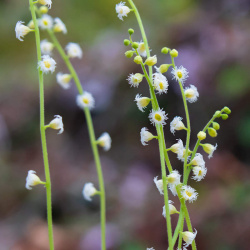 Store in the Fridge
Bishop's Cap Seeds
Mitella diphylla
Clinging to slender stems, these tiny, white flowers look like delicate lace. This native plant prefers moist, wooded areas, and is a pretty rare find in the wild. It is even more unusual in gardens because it takes some skill and patience to grow this wildflower.Quick Viewx
Store in the Fridge
Bishop's Cap Seeds
Mitella diphylla
Clinging to slender stems, these tiny, white flowers look like delicate lace. This native plant prefers moist, wooded areas, and is a pretty rare find in the wild. It is even more unusual in gardens because it takes some skill and patience to grow this wildflower.Quick ViewxBishop's Cap Seeds
Mitella diphylla
Clinging to slender stems, these tiny, white flowers look like delicate lace. This native plant prefers moist, wooded areas, and is a pretty rare find in the wild. It is even more unusual in gardens because it takes some skill and patience to grow this wildflower.
$3.96 Pkt - $320.00 / Oz -
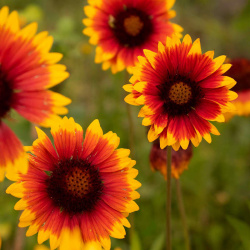 On Sale!
Blanket Flower Seeds
Gaillardia aristata
Reminiscent of an Indian blanket, this bi-colored variety comes in yellow, red, burgundy, and brown. Gaillardia Aristata is a native wildflower of the Northern Rockies, so it is better equipped to handle cold than its cousin, Indian Blanket. Buy these easy-to-grow Gaillardia Aristata seeds for color all season long.Quick Viewx
On Sale!
Blanket Flower Seeds
Gaillardia aristata
Reminiscent of an Indian blanket, this bi-colored variety comes in yellow, red, burgundy, and brown. Gaillardia Aristata is a native wildflower of the Northern Rockies, so it is better equipped to handle cold than its cousin, Indian Blanket. Buy these easy-to-grow Gaillardia Aristata seeds for color all season long.Quick ViewxBlanket Flower Seeds
Gaillardia aristata
Reminiscent of an Indian blanket, this bi-colored variety comes in yellow, red, burgundy, and brown. Gaillardia Aristata is a native wildflower of the Northern Rockies, so it is better equipped to handle cold than its cousin, Indian Blanket. Buy these easy-to-grow Gaillardia Aristata seeds for color all season long.
$3.48 Pkt - $7.59 / Oz -
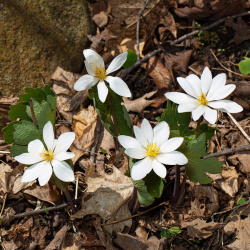 Store in the Fridge
Bloodroot Seeds
Sanguinaria canadensis
These white woodland beauties are one of the first ephemerals to emerge in the spring. This wildflower has been prized for many medicinal uses as well. The large-leaved foliage also makes an attractive woodland ground cover.Quick View$3.75 Pkt - $160.00 / Oz
Store in the Fridge
Bloodroot Seeds
Sanguinaria canadensis
These white woodland beauties are one of the first ephemerals to emerge in the spring. This wildflower has been prized for many medicinal uses as well. The large-leaved foliage also makes an attractive woodland ground cover.Quick View$3.75 Pkt - $160.00 / Oz -
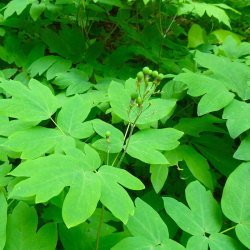 Store in the Fridge
Blue Cohosh Seeds
Caulophyllum thalictroides
Great for ornamental purposes, buy the blue cohosh for a bushy perennial that produces greenish flowers and bright blue berries. This woodland plant also has medicinal uses.Quick View$4.48 Pkt - $27.00 / Oz
Store in the Fridge
Blue Cohosh Seeds
Caulophyllum thalictroides
Great for ornamental purposes, buy the blue cohosh for a bushy perennial that produces greenish flowers and bright blue berries. This woodland plant also has medicinal uses.Quick View$4.48 Pkt - $27.00 / Oz -
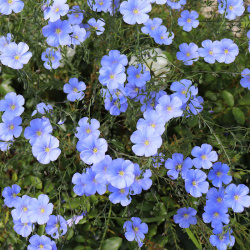 On Sale!
Blue Flax Seeds
Linum perrene
See the sky reflected in a sea of these heavenly blue blooms. This perennial is fast-growing and looks best as a mass planting. It is hard to imagine how this Linum Perrene plant produces such a vibrant color from just water and dirt.Quick View$3.48 Pkt - $7.65 / Oz
On Sale!
Blue Flax Seeds
Linum perrene
See the sky reflected in a sea of these heavenly blue blooms. This perennial is fast-growing and looks best as a mass planting. It is hard to imagine how this Linum Perrene plant produces such a vibrant color from just water and dirt.Quick View$3.48 Pkt - $7.65 / Oz -
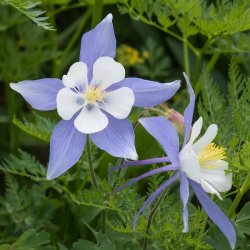 Blue Rocky Mountain Columbine Seeds
Aquilegia caerulea
This blue beauty grows in the meadows and cliffs of the Rocky Mountains. Many gardeners prize this clump-forming perennial with its large upward-facing blue and white flowers - it is so unique! Fill your home garden with a variety of our Midwest wildflower seed mixes.Quick Viewx
Blue Rocky Mountain Columbine Seeds
Aquilegia caerulea
This blue beauty grows in the meadows and cliffs of the Rocky Mountains. Many gardeners prize this clump-forming perennial with its large upward-facing blue and white flowers - it is so unique! Fill your home garden with a variety of our Midwest wildflower seed mixes.Quick ViewxBlue Rocky Mountain Columbine Seeds
Aquilegia caerulea
This blue beauty grows in the meadows and cliffs of the Rocky Mountains. Many gardeners prize this clump-forming perennial with its large upward-facing blue and white flowers - it is so unique! Fill your home garden with a variety of our Midwest wildflower seed mixes.
$3.48 Pkt - $20.16 / Oz -
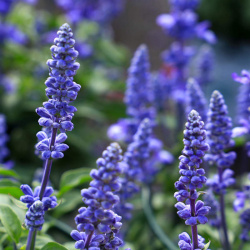 On Sale!
Blue Sage Seeds
Salvia farinacea
Dressed in vivid blue, these wildflower spikes are easy to grow. This perennial comes from Texas, so it can tolerate a lot of heat and drought. This plant has a wild habit and may look a little unruly in a refined garden.Quick View$3.48 Pkt - $15.72 / Oz
On Sale!
Blue Sage Seeds
Salvia farinacea
Dressed in vivid blue, these wildflower spikes are easy to grow. This perennial comes from Texas, so it can tolerate a lot of heat and drought. This plant has a wild habit and may look a little unruly in a refined garden.Quick View$3.48 Pkt - $15.72 / Oz -
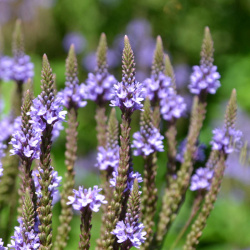 On Sale!
Blue Vervain Seeds
Verbena hastata
These small blue blooms grow on tall stems and are frequently found growing in moist areas. This native attracts a variety of butterflies and is often used in wildflower seed mixes.Quick View$3.48 Pkt - $12.65 / Oz
On Sale!
Blue Vervain Seeds
Verbena hastata
These small blue blooms grow on tall stems and are frequently found growing in moist areas. This native attracts a variety of butterflies and is often used in wildflower seed mixes.Quick View$3.48 Pkt - $12.65 / Oz -
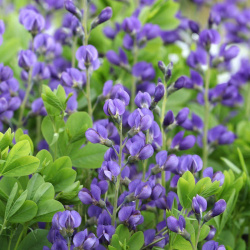 On Sale!
Blue Wild Indigo Seeds
Baptisia australis
Though slow to establish, these brilliant blue and purple blossoms are worth the wait. The bushy perennial can persist for decades and is a source for indigo dye.Quick View$3.48 Pkt - $15.95 / Oz
On Sale!
Blue Wild Indigo Seeds
Baptisia australis
Though slow to establish, these brilliant blue and purple blossoms are worth the wait. The bushy perennial can persist for decades and is a source for indigo dye.Quick View$3.48 Pkt - $15.95 / Oz -
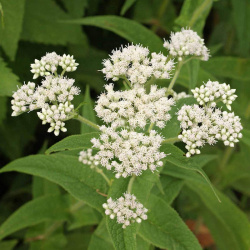 Boneset Seeds
Eupatorium perfoliatum
The white flower clusters of this native perennial are pleasantly fragrant, making it a butterfly magnet. Though its medicinal effectiveness has been debated in recent years, Boneset was a well-known healing plant in colonial times.Quick View$3.48 Pkt - $32.00 / Oz
Boneset Seeds
Eupatorium perfoliatum
The white flower clusters of this native perennial are pleasantly fragrant, making it a butterfly magnet. Though its medicinal effectiveness has been debated in recent years, Boneset was a well-known healing plant in colonial times.Quick View$3.48 Pkt - $32.00 / Oz -
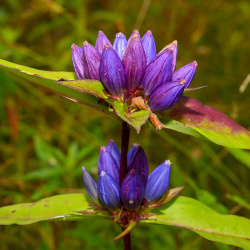 Bottle Gentian Seeds
Gentiana andrewsii
Named for their nearly closed tubular blossoms, these unusual wildflowers look like buds about to burst open. The only way they get pollinated is that bumblebees force their way in and do their duty.Quick View$3.75 Pkt - $100.00 / Oz
Bottle Gentian Seeds
Gentiana andrewsii
Named for their nearly closed tubular blossoms, these unusual wildflowers look like buds about to burst open. The only way they get pollinated is that bumblebees force their way in and do their duty.Quick View$3.75 Pkt - $100.00 / Oz -
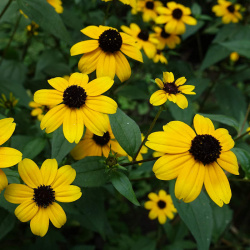 Brown Eyed Susan Seeds
Rudbeckia triloba
This bushy wildflower features masses of small yellow flowers with brown center cones. This biennial is fairly easy to grow and is included in many native prairie seed mixes as a pollinator species.Quick View$3.25 Pkt - $11.03 / Oz
Brown Eyed Susan Seeds
Rudbeckia triloba
This bushy wildflower features masses of small yellow flowers with brown center cones. This biennial is fairly easy to grow and is included in many native prairie seed mixes as a pollinator species.Quick View$3.25 Pkt - $11.03 / Oz -
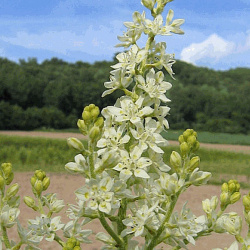 Bunch Flower Seeds
Melanthium virginicum
Though this native plant takes several years to reach its full growth, its unusual beauty is well worth the wait. Found in swamps and bogs, the fragrant flowers are known for being extremely attractive to bees and butterflies.Quick Viewx
Bunch Flower Seeds
Melanthium virginicum
Though this native plant takes several years to reach its full growth, its unusual beauty is well worth the wait. Found in swamps and bogs, the fragrant flowers are known for being extremely attractive to bees and butterflies.Quick ViewxBunch Flower Seeds
Melanthium virginicum
Though this native plant takes several years to reach its full growth, its unusual beauty is well worth the wait. Found in swamps and bogs, the fragrant flowers are known for being extremely attractive to bees and butterflies.
$3.48 Pkt - $108.00 / Oz -
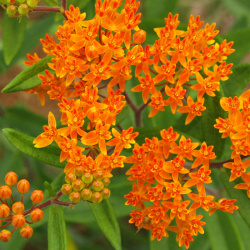 Butterfly Weed Seeds
Asclepias tuberosa
One of the most striking of native plants, Butterfly Weed lights up the prairies with its blazing orange flowers. Monarch Butterflies thrive on this plant, so it is a must for any butterfly garden on sandy soil. Butterfly milkweed seed thrives in rocky or sandy soil, typically in open fields or along roadsides.Quick Viewx
Butterfly Weed Seeds
Asclepias tuberosa
One of the most striking of native plants, Butterfly Weed lights up the prairies with its blazing orange flowers. Monarch Butterflies thrive on this plant, so it is a must for any butterfly garden on sandy soil. Butterfly milkweed seed thrives in rocky or sandy soil, typically in open fields or along roadsides.Quick ViewxButterfly Weed Seeds
Asclepias tuberosa
One of the most striking of native plants, Butterfly Weed lights up the prairies with its blazing orange flowers. Monarch Butterflies thrive on this plant, so it is a must for any butterfly garden on sandy soil. Butterfly milkweed seed thrives in rocky or sandy soil, typically in open fields or along roadsides.
$3.48 Pkt - $24.00 / Oz -
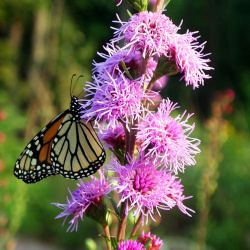 On Sale!
Button Blazing Star Seeds
Liatris aspera
This striking native takes a few years to grow from seed but is very attractive to butterflies, bees, and hummingbirds. Rows of feathery, pink blossoms line the tall stems of this eye-catcher. It is successfully used as a summer bloomer in native prairie plantings.Quick Viewx
On Sale!
Button Blazing Star Seeds
Liatris aspera
This striking native takes a few years to grow from seed but is very attractive to butterflies, bees, and hummingbirds. Rows of feathery, pink blossoms line the tall stems of this eye-catcher. It is successfully used as a summer bloomer in native prairie plantings.Quick ViewxButton Blazing Star Seeds
Liatris aspera
This striking native takes a few years to grow from seed but is very attractive to butterflies, bees, and hummingbirds. Rows of feathery, pink blossoms line the tall stems of this eye-catcher. It is successfully used as a summer bloomer in native prairie plantings.
$3.75 Pkt - $48.00 / Oz -
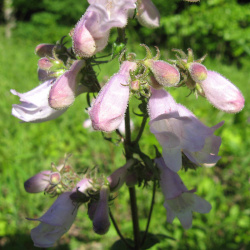 Calico Beardtongue Seeds
Penstemon calycosus
This native Penstemon can tolerate some shade, so it is often used in shady savanna type areas. The delicate pink tubular flowers will create a buzz wherever it blooms. This plant's unusual name comes from the fuzzy tongue in each open bloom.Quick View$3.48 Pkt - $64.00 / Oz
Calico Beardtongue Seeds
Penstemon calycosus
This native Penstemon can tolerate some shade, so it is often used in shady savanna type areas. The delicate pink tubular flowers will create a buzz wherever it blooms. This plant's unusual name comes from the fuzzy tongue in each open bloom.Quick View$3.48 Pkt - $64.00 / Oz -
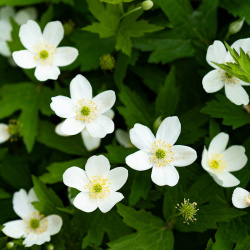 Canada Anemone Seeds
Anemone canadensis
This glistening, white flower will welcome in the summer season. Native to the prairies of Canada and the United States, this flower naturally grows in moist wooded areas, seasonally wet areas, and prairie meadows.Quick Viewx
Canada Anemone Seeds
Anemone canadensis
This glistening, white flower will welcome in the summer season. Native to the prairies of Canada and the United States, this flower naturally grows in moist wooded areas, seasonally wet areas, and prairie meadows.Quick ViewxCanada Anemone Seeds
Anemone canadensis
This glistening, white flower will welcome in the summer season. Native to the prairies of Canada and the United States, this flower naturally grows in moist wooded areas, seasonally wet areas, and prairie meadows.
$3.75 Pkt - $44.00 / Oz -
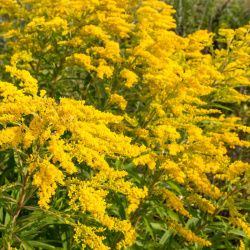 On Sale!
Canada Goldenrod Seeds
Solidago canadensis
This native perennial is probably the most aggressive member of the Goldenrod family and is rarely recommended for native plantings because it can become invasive in favorable conditions. Goldenrod makes an excellent pollen source for honeybees in the fall and is also known for its medicinal qualities.Quick Viewx
On Sale!
Canada Goldenrod Seeds
Solidago canadensis
This native perennial is probably the most aggressive member of the Goldenrod family and is rarely recommended for native plantings because it can become invasive in favorable conditions. Goldenrod makes an excellent pollen source for honeybees in the fall and is also known for its medicinal qualities.Quick ViewxCanada Goldenrod Seeds
Solidago canadensis
This native perennial is probably the most aggressive member of the Goldenrod family and is rarely recommended for native plantings because it can become invasive in favorable conditions. Goldenrod makes an excellent pollen source for honeybees in the fall and is also known for its medicinal qualities.
$3.48 Pkt - $28.00 / Oz -
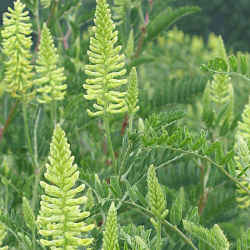 On Sale!
Canadian Milk Vetch Seeds
Astragalus canadensis
Huge plumes of fern-like foliage and spiky flowers set this unusual wildflower apart. Vigorous growth and adaptability make this plant a good choice for erosion control or prairie restoration.Quick View$3.25 Pkt - $7.92 / Oz
On Sale!
Canadian Milk Vetch Seeds
Astragalus canadensis
Huge plumes of fern-like foliage and spiky flowers set this unusual wildflower apart. Vigorous growth and adaptability make this plant a good choice for erosion control or prairie restoration.Quick View$3.25 Pkt - $7.92 / Oz -
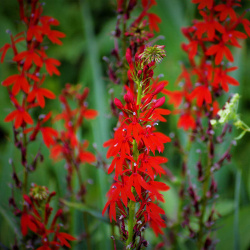 Cardinal Flower Seeds
Lobelia cardinalis
True to its name, this brilliant wildflower sports the scarlet hue of the cardinal. It has been called the reddest red in nature and flourishes in wet areas near ponds or streams. This flower is a native perennial wildflower that attracts hummingbirds and butterflies.Quick Viewx
Cardinal Flower Seeds
Lobelia cardinalis
True to its name, this brilliant wildflower sports the scarlet hue of the cardinal. It has been called the reddest red in nature and flourishes in wet areas near ponds or streams. This flower is a native perennial wildflower that attracts hummingbirds and butterflies.Quick ViewxCardinal Flower Seeds
Lobelia cardinalis
True to its name, this brilliant wildflower sports the scarlet hue of the cardinal. It has been called the reddest red in nature and flourishes in wet areas near ponds or streams. This flower is a native perennial wildflower that attracts hummingbirds and butterflies.
$3.75 Pkt - $80.00 / Oz -
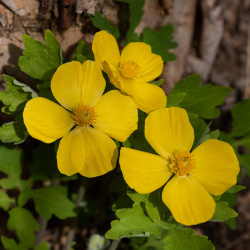 Store in the Fridge
Celandine Poppy Seeds
Stylophorum diphyllum
Also known as wood poppies, these brilliant yellow celandine poppies have it made in the shade. Sometimes challenging to grow from seed, this wildflower is best planted in the late summer or fall with freshly harvested seeds.Quick View$3.96 Pkt - $400.00 / Oz
Store in the Fridge
Celandine Poppy Seeds
Stylophorum diphyllum
Also known as wood poppies, these brilliant yellow celandine poppies have it made in the shade. Sometimes challenging to grow from seed, this wildflower is best planted in the late summer or fall with freshly harvested seeds.Quick View$3.96 Pkt - $400.00 / Oz -
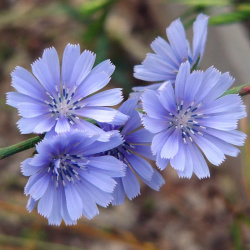 Chicory Seeds
Cichorium intybus
These stunning electric blue blooms are a feast for the eyes. This wildflower is so easy to grow that some gardeners consider it to be invasive. The leaves of the plant are edible and make nutritious salads.Quick View$2.98 Pkt - $6.67 / Oz
Chicory Seeds
Cichorium intybus
These stunning electric blue blooms are a feast for the eyes. This wildflower is so easy to grow that some gardeners consider it to be invasive. The leaves of the plant are edible and make nutritious salads.Quick View$2.98 Pkt - $6.67 / Oz -
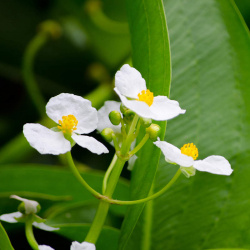 Common Arrowhead Seeds
Sagittaria latifolia
Native to ponds, streams, and marshes, this perennial is known by its arrowhead-shaped leaves and white three-petaled flowers. This plant is also known as Duck Potato because it grows tubers that the ducks like to eat.Quick View$3.48 Pkt - $36.00 / Oz
Common Arrowhead Seeds
Sagittaria latifolia
Native to ponds, streams, and marshes, this perennial is known by its arrowhead-shaped leaves and white three-petaled flowers. This plant is also known as Duck Potato because it grows tubers that the ducks like to eat.Quick View$3.48 Pkt - $36.00 / Oz -
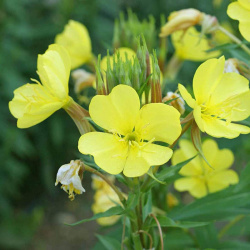 Common Evening Primrose Seeds
Oenothera lamarckiana
Sense a special evening glow from a planting of these luminous golden flowers. The noonday heat withers the blossoms of each day, but new blossoms then bloom each evening. This wildflower is easy to grow.Quick View$2.98 Pkt - $7.09 / Oz
Common Evening Primrose Seeds
Oenothera lamarckiana
Sense a special evening glow from a planting of these luminous golden flowers. The noonday heat withers the blossoms of each day, but new blossoms then bloom each evening. This wildflower is easy to grow.Quick View$2.98 Pkt - $7.09 / Oz -
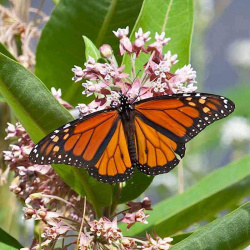 Common Milkweed Seeds
Asclepias syriaca
This familiar wildflower is a significant food source for monarch caterpillars and butterflies, and so it is used for butterfly gardens and waystations. This common variety spreads easily, but most gardeners do not mind if it spreads a bit.Quick View$3.48 Pkt - $12.65 / Oz
Common Milkweed Seeds
Asclepias syriaca
This familiar wildflower is a significant food source for monarch caterpillars and butterflies, and so it is used for butterfly gardens and waystations. This common variety spreads easily, but most gardeners do not mind if it spreads a bit.Quick View$3.48 Pkt - $12.65 / Oz -
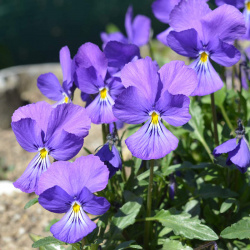 Out Of Stock
Corsican Violet Seeds
Viola corsica
Unlike the garden pansy, these violet-blue blossoms will thrive even in hot sunny locations if they have enough water. This hardy perennial originates from the Island of Corsica in the Mediterranean but grows well in most localities. It also makes a beautiful container plant.Quick Viewx
Out Of Stock
Corsican Violet Seeds
Viola corsica
Unlike the garden pansy, these violet-blue blossoms will thrive even in hot sunny locations if they have enough water. This hardy perennial originates from the Island of Corsica in the Mediterranean but grows well in most localities. It also makes a beautiful container plant.Quick ViewxCorsican Violet Seeds
Viola corsica
Unlike the garden pansy, these violet-blue blossoms will thrive even in hot sunny locations if they have enough water. This hardy perennial originates from the Island of Corsica in the Mediterranean but grows well in most localities. It also makes a beautiful container plant.
$3.96 Pkt - $200.00 / Oz -
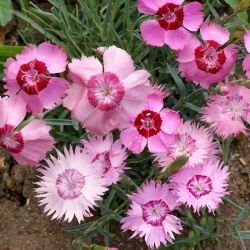 On Sale!
Cottage Pinks Seeds
Dianthus plumarius
Perfect for a cottage garden, these delicate blossoms bring sweet, old-fashioned charm. This perennial gives off a distinctive, clove-like scent, and is very easy to grow.Quick View$3.75 Pkt - $11.47 / Oz
On Sale!
Cottage Pinks Seeds
Dianthus plumarius
Perfect for a cottage garden, these delicate blossoms bring sweet, old-fashioned charm. This perennial gives off a distinctive, clove-like scent, and is very easy to grow.Quick View$3.75 Pkt - $11.47 / Oz -
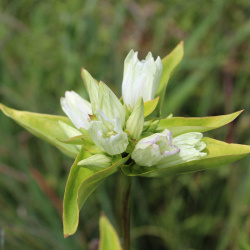 On Sale!
Cream Gentian Seeds
Gentiana flavida
Cream Gentian has nearly closed tubular blossoms that never really open. Determined bumblebees force their way into the blooms; otherwise, this species would not get pollinated.Quick View$3.96 Pkt - $32.00 / Oz
On Sale!
Cream Gentian Seeds
Gentiana flavida
Cream Gentian has nearly closed tubular blossoms that never really open. Determined bumblebees force their way into the blooms; otherwise, this species would not get pollinated.Quick View$3.96 Pkt - $32.00 / Oz -
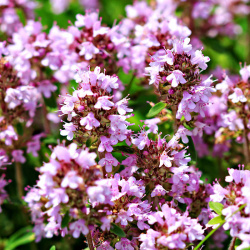 Creeping Thyme Seeds
Thymus serpyllum
This fragrant little plant spreads to create a lovely carpet of lavender blooms. Though it can be used as a flavoring or herb, this undomesticated cousin is not the true culinary thyme - it is better suited as a ground cover.Quick View$3.48 Pkt - $21.00 / Oz
Creeping Thyme Seeds
Thymus serpyllum
This fragrant little plant spreads to create a lovely carpet of lavender blooms. Though it can be used as a flavoring or herb, this undomesticated cousin is not the true culinary thyme - it is better suited as a ground cover.Quick View$3.48 Pkt - $21.00 / Oz -
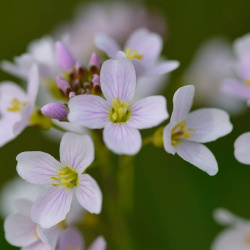 Out Of Stock
Cuckoo Flower Seeds
Cardamine pratensis
Varying from pink to white, these four-petaled flowers bloom when the cuckoos begin to call. The beauties can be found in marshes, moist woodland, or at the water's edge.Quick Viewx
Out Of Stock
Cuckoo Flower Seeds
Cardamine pratensis
Varying from pink to white, these four-petaled flowers bloom when the cuckoos begin to call. The beauties can be found in marshes, moist woodland, or at the water's edge.Quick ViewxCuckoo Flower Seeds
Cardamine pratensis
Varying from pink to white, these four-petaled flowers bloom when the cuckoos begin to call. The beauties can be found in marshes, moist woodland, or at the water's edge.
$3.96 Pkt - $136.00 / Oz -
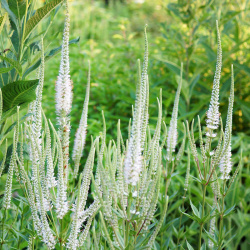 Culver's Root Seeds
Veronicastrum virginicum
Gardeners and wildflower enthusiasts value this native plant for its graceful beauty. Others have found medicinal uses for the plant, and it seems that the honeybees and butterflies would agree with both parties.Quick View$3.75 Pkt - $80.00 / Oz
Culver's Root Seeds
Veronicastrum virginicum
Gardeners and wildflower enthusiasts value this native plant for its graceful beauty. Others have found medicinal uses for the plant, and it seems that the honeybees and butterflies would agree with both parties.Quick View$3.75 Pkt - $80.00 / Oz -
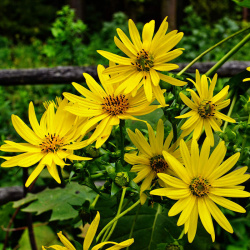 Cup Plant Seeds
Silphium perfoliatum
Cup plant seeds are perfect for attracting butterflies and other pollinators, the cup-like leaves of this native plant store rainwater. This tall perennial is a prevalent species in native seed mixes, especially if it is an area with more moisture.Quick View$3.48 Pkt - $18.77 / Oz
Cup Plant Seeds
Silphium perfoliatum
Cup plant seeds are perfect for attracting butterflies and other pollinators, the cup-like leaves of this native plant store rainwater. This tall perennial is a prevalent species in native seed mixes, especially if it is an area with more moisture.Quick View$3.48 Pkt - $18.77 / Oz












